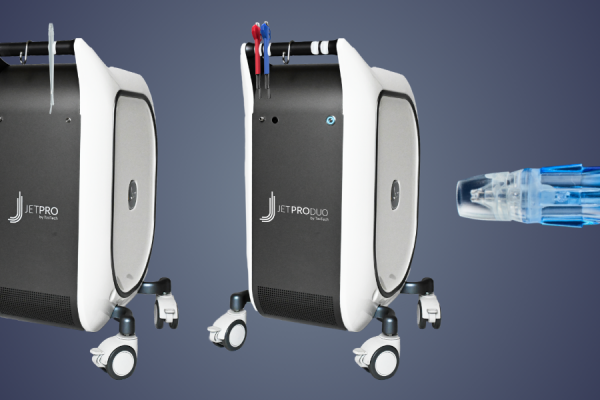A Variable Speed Drive (VSD) is a type of motor controller that drives an electric motor by varying its input voltage and frequency. It regulates the speed and torque of the motor during start-up and throughout operation, offering optimal control. This variable control provides increased energy efficiency and prolonged lifespan of the motor.
Overview of how a Variable Speed Drive functions
A Variable Speed Drive (VSD) operates by altering the frequency and voltage of the power supply to match the desired motor speed, thereby enhancing energy efficiency. Variable speed drive regulates an electric motor’s speed and torque output by varying the input frequency and voltage, facilitating smoother operational control, reduced energy use, and cost savings.
Factors Impacting the Efficiency of VSD
Power losses in VSD
Variable Speed Drives (VSD) regulate the speed and rotational force of electrical motors. However, they are not always efficient. Power losses occur in VSD due to various reasons like converter losses, switching losses, and harmonic distortions. These losses can impact the overall efficiency and performance of the system.
Cooling needs and energy consumption
Cooling needs significantly contribute to global energy consumption. The increased usage of air conditioning devices, especially in hotter climates, leads to amplified energy demand. Consequently, this results in an elevated environmental burden due to CO2 emissions. Hence, improving cooling technologies’ energy efficiency is crucial to reduce greenhouse gas emissions.
Ways to Maximize Efficiency with a VSD
Optimal loading of VSD
Optimal loading in VSD, or ventricular septal defect, refers to achieving the right balance of blood volume to ensure efficient functionality of the heart. It is vital to maintain, as improper loading conditions might exacerbate the defect. It can involve adjusting fluid intake, medication and potentially surgical intervention for stabilization.
Correct installation and placement
Correct installation and placement are crucial in equipment setup to ensure optimal functioning and safety. Installation should adhere to manufacturer instructions and industry standards. Placement, equally essential, must consider accessibility, ventilation, and connection requirements. Poor installation or incorrect placement could lead to inefficiency, increased maintenance costs, or safety risks.
Regular maintenance and inspection
Regular maintenance and inspection are crucial measures to ensure the longevity of any machinery or system. These scheduled tasks identify any issues at an early stage, allowing for timely repairs. This process greatly minimizes any potential losses due to unexpected breakdowns, thereby boosting overall productivity and efficiency.
Benefits of High-Efficiency VSD
Comprehensive energy savings
Comprehensive energy savings involve implementing a wide range of strategies aimed at reducing energy consumption. It includes using energy-efficient appliances, optimizing heating and cooling systems, investing in renewable energy and promoting behavioural changes. These comprehensive efforts not only reduce environmental impact but also result in significant financial savings.
Expanded lifespan of equipment
Regular maintenance and timely repairs can dramatically expand the lifespan of equipment. This reduces the frequency of expensive replacements and disruptions in operations. Improved longevity also leads to maximising productivity and profitability. Thus, investing in preventive measures is crucial for cost-effective and efficient equipment management.
Enhanced process control and production yield
Enhanced process control involves using sophisticated technologies and techniques to accurately control manufacturing procedures. This boosts efficiency and reduces waste, significantly improving production yield. The result is often a better quality product, lower production costs and higher profitability. It is a vital business improvement tool for manufacturing industries.

Real-World Application of VSD
Usage in industries like mining, oil and gas
The application of technology in industries like mining, oil and gas is pivotal for operational efficiency. Advanced tools are used for the exploration, extraction, and processing of resources. Drones, robotics, and AI help in detecting potential hazards, maintaining machinery, and safeguarding worker’s health. Hence, technology usage significantly boosts productivity and safety in these sectors.
Usage in heating, ventilation, and air conditioning (HVAC)
HVAC systems are essential for regulating indoor temperature, humidity, and air quality. They are widely used in residential, commercial, and industrial settings. HVAC usage involves controlling thermal comfort and air exchange rate to create an optimal and healthy indoor environment. Proper maintenance ensures energy efficiency and prevents system breakdown.
Future technology improvements for VSD
Smart sensor technology
Smart sensor technology is a groundbreaking advancement that enables more precise detection and monitoring. It consists of devices that incorporate functions of data preprocessing, enhancing efficiencies in various fields such as healthcare, security, manufacturing, and agriculture. The use of smart sensors increases accuracy, reliability, and speed in data collection and analysis.
Predictive maintenance tools
Predictive maintenance tools utilize various data analyzing techniques to predict future faults in machinery. These include artificial intelligence, machine learning, and data statistics, offering early warnings about potential malfunctions. Consequently, they allow early intervention, reducing equipment downtime, preventing sudden failures, and extending machinery lifespan. They are crucial for industries requiring meticulous equipment management.
Conclusion
Recap of maximizing efficiency with a VSD
VSD, or Variable Speed Drive, enhances efficiency by managing motor speeds to align with load requirements. Energy consumption is thus reduced as the motor only uses the necessary power. This extends equipment lifespan by cutting down mechanical stress. VSD delivers precise control and significant energy savings, maximizing operational efficiency.
Benefit summary and future potential
The benefits of project implementation include increased productivity and profitability, improved customer satisfaction, and robust business growth. The future potential of a project is immense, with opportunities for expansion, innovation, and market dominance. It allows an organization to stay competitive and relevant in an ever-evolving business landscape.
Variable speed drive FAQs
What is a variable speed drive?
A variable speed drive is a type of industrial control system that manipulates the speed of electric motors. By altering the frequency and voltage of the motor’s power supply, it helps machines to run more efficiently. These drives are extensively used in machinery that needs speed control such as fans, pumps, and conveyors.
What is the difference between VFD and VSD?
A Variable Frequency Drive (VFD) and a Variable Speed Drive (VSD) are both used to control the speed of machinery, but they do so in different ways. A VFD changes the frequency of the electrical supply to alter the motor speed, while a VSD adjusts the voltage or current to change the motor’s speed.
What is the difference between a variable speed drive and an adjustable speed drive?
A variable speed drive and an adjustable speed drive essentially perform the same task – they control the speed of a motor. The difference lies in semantics. The term “variable” indicates that the speed can continuously vary within the set limits, while “adjustable” suggests the speed is set and adjusted as needed.
How does VFD work?
A Variable Frequency Drive (VFD) regulates the speed of an AC motor by altering the frequency supplied to the motor. It converts the incoming electrical supply from AC to DC and reconverts it into a waveform close to a sine wave. This process helps in controlling the motor’s speed and torque, increasing energy efficiency.





